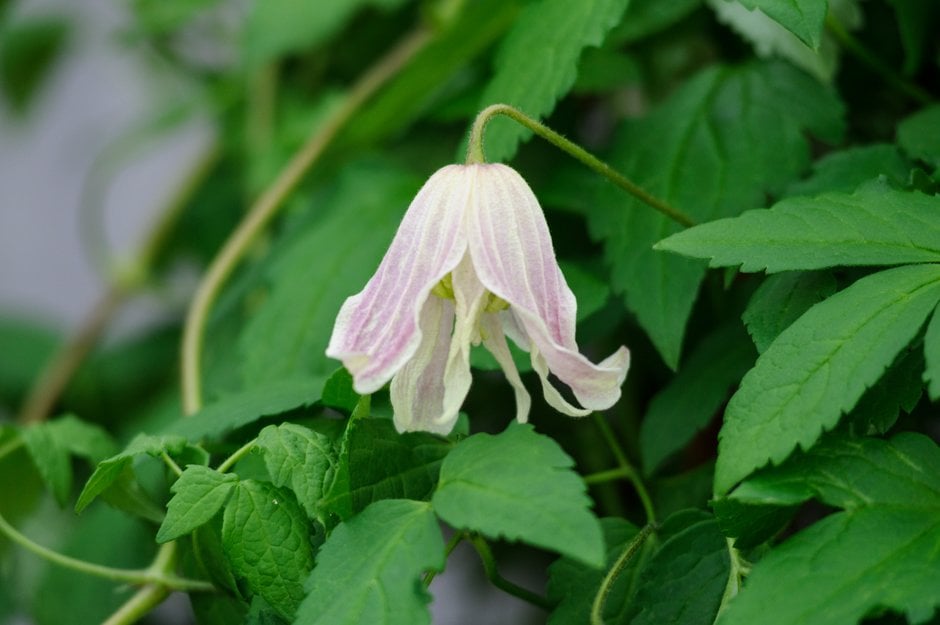Clematis 'Diamond Anniversary' (A)
clematis 'Diamond Anniversary'
'Diamond Anniversary' is a deciduous climber to about 2m with nodding, bell-shaped flowers with four large and four small petals, white with a pink flush on the outer petals, produced in mid- to late spring

Buy this plant
Size
Ultimate height
1.5–2.5 metresTime to ultimate height
2–5 yearsUltimate spread
0.5–1 metresGrowing conditions
Moisture
Moist but well–drainedpH
Alkaline, NeutralColour & scent
| Stem | Flower | Foliage | Fruit | |
| Spring | White Pink | Green | ||
|---|---|---|---|---|
| Summer | Green | |||
| Autumn | Green | |||
| Winter |
Position
- Full sun
- Partial shade
Aspect
West–facing or East–facing or South–facing or North–facing
Exposure
Sheltered Hardiness
H6Botanical details
- Family
- Ranunculaceae
- Native to GB / Ireland
- No
- Foliage
- Deciduous
- Habit
- Climbing
- Potentially harmful
- Skin irritant. Wear gloves and other protective equipment when handling. Pets (rabbits): Harmful if eaten. For further information and contact numbers regarding pets, see the HTA guide to potentially harmful plants
- Genus
Clematis can be deciduous or evergreen shrubs or herbaceous perennials, mostly climbing by twining leaf-stalks, and often with showy flowers. Some have attractive fluffy seedheads in autumn
- Name status
Unresolved
- Horticultural Group
- Atragene Group Clematis consists of woody climbers with deciduous, 1 to 2-ternate leaves and nodding, bell-shaped, single or double flowers to 10cm across, on old wood in spring and early summer, occasionally also later, on current year's growth
How to grow
Cultivation
Plant in a moisture-retentive, well-drained soil, with the roots and base of the plant kept cool and shaded by other plants or a layer of pebbles at the base. Plant with the crown 5-8cm deep to encourage new shoots to grow from below ground level. Can be grown in containers at least 45cm deep and wide in a peat-free, loam-based potting compost. See also clematis cultivation
Propagation
Propagate by softwood cuttings in spring, semi-ripe cuttings in summer or by layering in late winter or early spring
Suggested planting locations and garden types
- City and courtyard gardens
- Cottage and informal garden
- Patio and container plants
- Flower borders and beds
- Wall side borders
Pruning
Pests
May be susceptible to aphids, snails and caterpillars; petals may be eaten by earwigs
Diseases
May be susceptible to honey fungus (rarely), clematis wilt and clematis slime flux
Get involved
The Royal Horticultural Society is the UK’s leading gardening charity. We aim to enrich everyone’s life through plants, and make the UK a greener and more beautiful place.